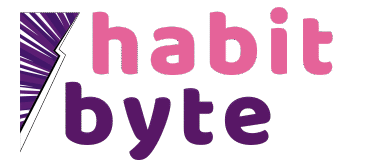10 Creative Habits to Stop Comparing and Start Creating
Creativity isn’t just for artists,it’s a daily wellness practice that fuels clarity, confidence, and joy. If comparison has been stealing your spark, these simple, doable habits will help you shift from scrolling to making, from perfectionism to progress. Pick two to start this week, layer them into the day you already have, and watch your creative energy return.
1. Redefine Creativity (So You Do It More)
Creativity is any honest expression or fresh problem-solving,not just paintings and novels. Claim the creativity you already practice in cooking, emails with personality, helpful notes, playlists, and garden hacks. When you widen the definition, you widen the door to show up daily without pressure.
2. Create Before You Consume
Spend the first 5–10 minutes of your day making something,one paragraph, a voice memo, a sketch,before opening feeds or inboxes. This small sequence flip gives your brain the signal that your voice matters more than comparison. Even micro-outputs compound into momentum.
- Set a 7-minute timer and write: “Today would feel good if…”
- Record a one-minute idea note before checking messages.
3. Morning Pages Lite (7 Minutes)
Handwrite whatever is on your mind without editing to clear mental clutter. Stream-of-consciousness writing lowers rumination and frees attention for making. Prompt to try: “If I weren’t worried about judgment, I would create…”
4. Make a Minimum Viable Creative Act
Shrink the task until it’s impossible to resist: 100 words, a thumbnail sketch, one slide, 8 bars of music. Completion builds trust with yourself, which beats waiting for perfect conditions. Do the tiny version daily and watch it naturally grow.
5. Name Your Inner Critics,and Negotiate
Give your critical voices names to disarm them, then set clear rules. “Perfectionist Pat can speak after draft two; for now, Curiosity is driving.” This turns vague self-doubt into a manageable conversation and keeps you moving.
6. Use Creative Constraints
Constraints spark originality by narrowing your options and reducing overthinking. Try “write a scene using only dialogue,” “design with a two-color palette,” or “cook with five ingredients.” When limits are clear, your voice gets louder.
7. Map Your Energy and Protect a Sprint
Notice when your focus and mood peak, then schedule a 20–40 minute creative sprint inside that window. Treat it like a meeting,door closed, notifications off, playlist on. Consistency in a high-energy slot beats long, sporadic sessions.
- Block the time on your calendar with a title: “Creative Sprint.”
- Use the same soundtrack to cue your brain: “this sound = make.”
8. Try Comparison Detox Windows
For the first hour of your day (or any chosen block), avoid feeds, reviews, and metrics. Replace them with a “Create for 10” session where output matters more than evaluation. Fewer inputs mean more original connections.
9. Climb a Visibility Ladder
Share your work in stages: private, semi-private, then public. Start with your journal, then a trusted friend, then a small group post, and only later a wider share. Publishing imperfectly builds courage faster than hiding while polishing forever.
- Good-enough rule: clear takeaway, no meaning-changing typos, friendly sign-off,then ship.
10. Close the Day with a Ritual and Idea Bank
End with two quick lines: “Today I created…” and “Tomorrow I’ll start with…”. Capture one idea per day in a notes app,title, color combo, overheard line,and pick one to test weekly. A simple close reduces decision fatigue and keeps your pipeline full.
Bring It All Together
You don’t need fearless confidence to create,you need tiny, repeatable moves that lower friction and lift your voice. Choose two habits, protect a short daily sprint, and measure progress by showing up, not by applause. Comparison loses power when you’re busy making; start today and let momentum do the rest.
